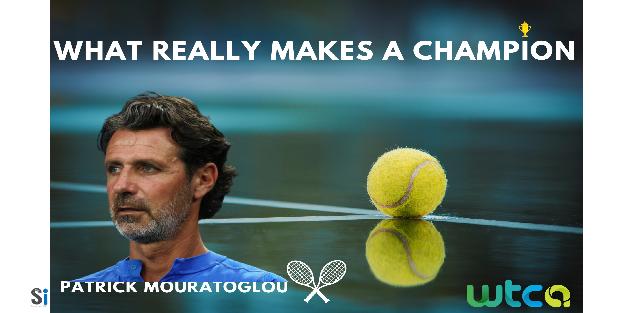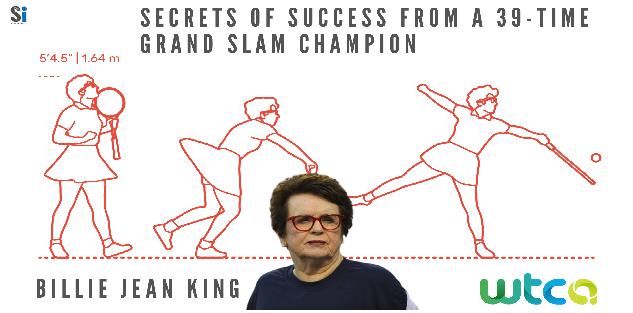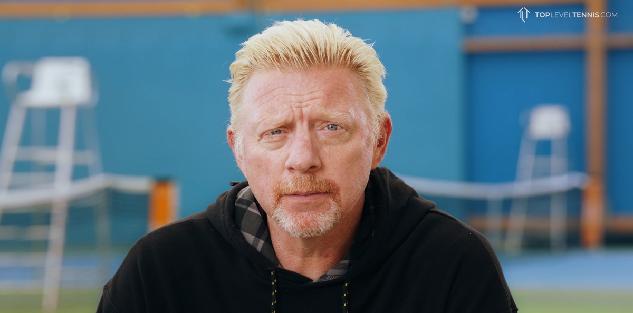Featured courses
- Four Tips to Turn Your Tennis Forehand Into a Weapon by Grant Young
- Tennis Legend Billie Jean King’s 4 Responsibilities as a Player by Grant Young
- Two Top Priorities For Success in Doubles Tennis by Grant Young
- Three of Tennis Whiz Lisa Dodson’s Tips to Improve Serves by Grant Young
- Three Elite Tennis Ball Machine Drills by Grant Young
- Three Keys For Correcting Tennis Serving Mechanics by Grant Young
- Five Tactical Tips to Win More Tennis Matches by Grant Young
- 4 Lessons Patrick Mouratoglou Learned From Coaching Serena Williams by Grant Young
- Four Effective Backhand Tennis Drills by Grant Young
- Two of Legendary Tennis Coach Paul Annacone’s Crucial Player Development Tips by Grant Young
- A Step-By-Step Guide To Mastering The Serve by Krsto Arsenijevic
- How to Dominate the Clay Court in Tennis by Krsto Arsenijevic
- 10 Essential Tennis Drills Every Coach Should Know by Brandon Ogle
- 8 Pre-Game Exercises to Prime Your Tennis Team for Competition by Neil Brown
- 7 Proven Tips To Develop Your Net Game in Tennis by Krsto Arsenijevic
- 10 Essential Tennis Drills Every Coach Should Know by Krsto Arsenijevic
- Developing Players - Two-handed backhand by Ramon Osa
- 6 Simple Warm-up Exercises For Tennis Players by Krsto Arsenijevic
- How to Beat a Serve-and-Volley Player by Krsto Arsenijevic
- How To Build Your Kinetic Chain Like Djokovic by Aiden Lefebvre
- How to neutralize a lefty in Tennis by Aiden Lefebvre
- 5 Tips To Improve Your Tennis Game Today by Krsto Arsenijevic
- Everything You Need to Know Before Buying New Tennis Shoes by Brandon Ogle
- Amp up your tennis practice with situational play by Neil Brown
- Tennis Equipment List by Brandon Ogle
- How to Master The One-handed Backhand in Tennis by Krsto Arsenijevic
- Modern High School Tennis Coaching Obstacles by Neil Brown
- Increase Your Tennis Fitness Level With 3 Easy Drills by Krsto Arsenijevic
- How to Successfully Hit a Two-Handed Backhand by Brandon Ogle
- How to Become a Grass Court Specialist in Tennis by Brandon Ogle
- How to Dominate the Hard-Court like Serena Williams by Brandon Ogle
- Hit a Drop Shot to Keep Your Opponent Off-Balance by Brandon Ogle
- New Tennis Injury Findings Linked to Neutral & Closed Stances by Oscar Wegner
- CHATTING WITH TENNIS PRO BRUCE CONNORS by Brandon
- How to Become a Mentally Strong Tennis Player by Brandon Ogle
- How to Win the Game of Angles by Hitting Cross-Court Shots by Eric Mahnke
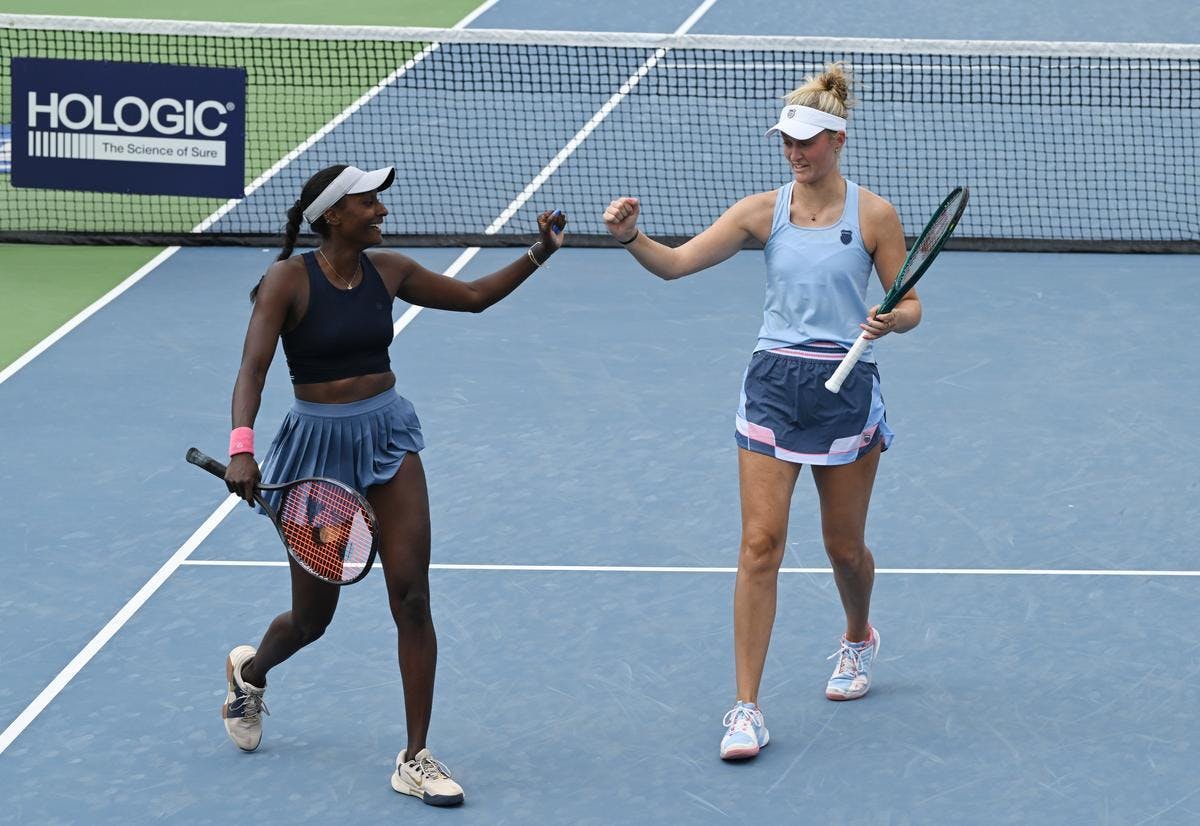
Two Top Priorities For Success in Doubles Tennis
- By Grant Young
Finding an effective tennis doubles strategy can be challenging for several reasons, despite it often seeming like a more cooperative and team-oriented format compared to singles.
1. Team Chemistry: Unlike singles, doubles require two players to work in unison. This means that good communication and a strong understanding of each other’s playing styles are critical. Players need to develop synergy, which can take time and effort, especially if they are not accustomed to playing together.
2. Strategy and Positioning: Doubles tennis involves distinct strategic elements, such as court positioning and shot selection. Players must constantly communicate their intentions and adjust their positioning based on their partner’s actions. This requires a level of tactical awareness and adaptability that can be hard to maintain, especially under pressure.
3. Specialized Skills: Doubles players often need specific skills that differ from those required in singles. For instance, effective net play is crucial in doubles, and mastering volleys, overheads, and quick reflexes can be demanding. Not all players excel at these skills, which can affect overall performance.
4. Psychological Pressure: The dynamics of doubles introduce unique psychological pressures. Players may feel responsible for their partner's performance or face tension during close matches. Mental resilience becomes essential, as does the ability to support each other emotionally throughout the highs and lows of the match.
5. Diverse Play Styles: Each player brings their unique style to a doubles match. When these styles clash or don’t complement each other, it can lead to confusion and ineffective play. Finding a balance between different approaches can be challenging, particularly if partners have contrasting strengths and weaknesses.
These factors illustrate the complexity of achieving success in doubles tennis. It requires not only technical skill but also a deep understanding of teamwork, strategy, and mental fortitude.
This difficulty is why it’s important that a tennis coach have their priorities straight when coaching. And very few can claim to know this better than Pete Collins.
Pete Collins is the creator of Successful Doubles, an innovative, easy-to-learn approach to playing doubles. He’s also an International Master Professional with the Professional Tennis Registry (PTR), which has honored him as Professional of the Year and Tester of the Year.
An accomplished speaker and instructor of doubles tennis strategy, Pete was Director and Head Tennis Professional at the Augusta Country Club in Augusta, Georgia, from 1974 until 2012, has served as a Professional Doubles Workshop Leader for the PTR, has successfully completed the USTA's Sports Science Competency Examinations, and has won numerous singles and doubles titles over his career.
Coach Collins’ ‘Successful Doubles I: The Core of Successful Doubles’ explains what he believes are the three biggest priorities when it comes to doubles tennis. We’ve taken the first two and provided them for your use below.
Priority 1: Executing the Split-Spring
Coach Collins’ first priority for doubles is being able to execute what he calls the “split-spring”.
He breaks this down into three smaller segments:
1. Being in a split, balanced standing position before the opponent takes their racket back on a serve, or when you hear your partner hit their serve.
2. Spring off of this split position, regardless of whether the ball is headed to you or if you’re hitting the ball.
3. Make sure that you deal in time, and not distance, when deciding which shots to take and where to place them.
The biggest key about this split-spring strategy is that it allows a player to cover the maximum amount of distance on their part of the court, regardless of where the shot takes them. It also forces a player to remain and regain their balance after every shot while staying prepared for whatever shot comes at them from their opponent.
Priority 2: Be in the Middle of Your Opponent’s Return Angle
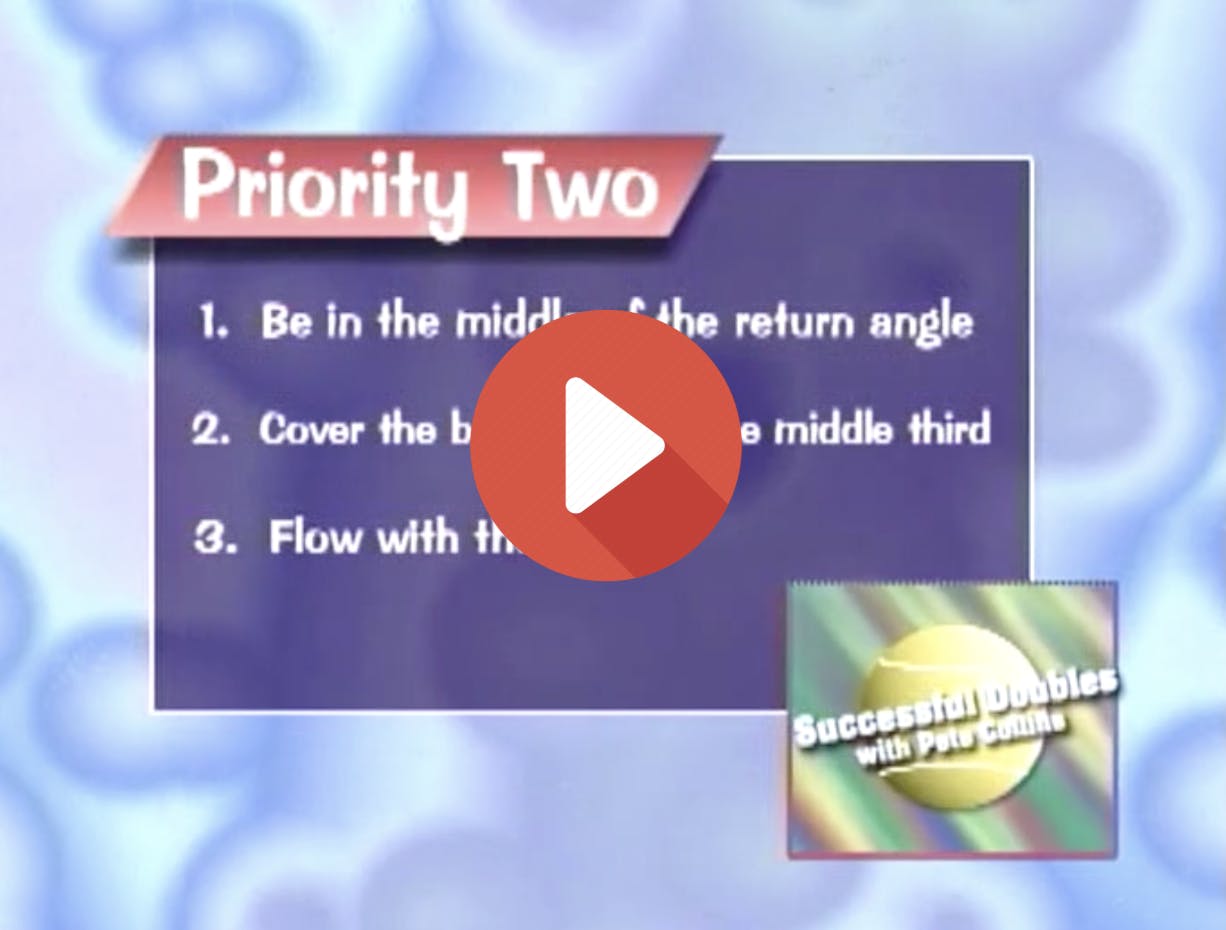
Coach Collins also boils down his second priority for doubles tennis success into three smaller segments:
1. Be in the middle of your opponent’s return angle. What he means by this is the doubles players should be dividing the court into thirds, and as long as the ball is in the middle of the court, they should be standing along the two invisible lines that comprise the borders of each third.
However, once the ball moves to a different position, the players must move according to where the ball is headed so that the part that’s equidistant between them is right in the middle of where their opponent is when they return the ball.
While this might sound difficult, experience and communication about positioning before and during a match and at practice will be key in nailing this down.
2. Cover the ball third and the middle third. Going off of the first part, positioning doesn’t always need to encompass the entire court if the ball is at either end, because a player is never going to shoot a shot that does to the opposite side of the court. Therefore, each doubles player’s priorities are either covering the ball third or the middle third.
3. Flow with the ball. The ball is always going to inform you which way to move, whether that be sideways or vertically. But this will only be successful if both doubles partners are flowing equally, so that there are no clear openings for the opponent to take advantage of.

